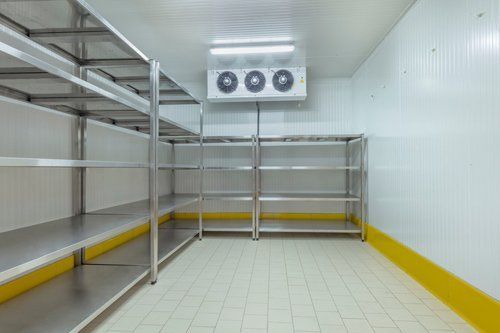This article lists three maintenance tips to ensure your walk-in refrigerator continues to run in a strong and efficient fashion. Read on to learn more.
04.27.2018
3 Maintenance Tips for Your Walk-In Refrigerator
Walk-in refrigerators play a vital role in restaurants, supermarkets, and other food industry businesses. For that reason, nothing could be worse than a walk-in refrigerator that stops working the way it should. Spoiled food, expensive repairs, and temporary shutdowns are just a few of the problems that can stem from a broken or otherwise compromised walk-in refrigerator.
Fortunately, proactive business owners can do a lot to minimize the chances of such problems — provided they follow a few key guidelines. If you would like to improve your knowledge of walk-in refrigerator maintenance, read on. This article will offer three effective tips for ensuring your walk-in continues to run in a strong and efficient fashion.
1. Don't Block Your Evaporator Fans
A walk-in refrigerator works much like any other cooling system. Refrigerant moves back and forth between a gaseous and a liquid state, absorbing heat in the process. The compressor forces gaseous refrigerant back into a liquid. Then it flows via refrigerant lines into the evaporator coil, which usually can be found mounted at the rear ceiling of your walk-in.
A series of evaporator fans draw air from the refrigerator through the evaporator coils. There, the condensed refrigerant absorbs any excess heat. The evaporator fans continue to run even after the ideal temperature has been reached, in order to ensure that cool air circulates evenly throughout the interior of the refrigerator.
A common mistake that owners of walk-in refrigerators make involves stacking food or other items in such a way that they block the evaporator fans. Blocking the fans will impede the circulation of air. This will make it more difficult to accomplish cooling tasks. It will also make it harder to ensure that warmer air from the front of the walk-in reaches the evaporator coils.
2. Keep Your Hinges Lubricated
A walk-in refrigerator sees a lot of use, with people hurrying in and out of it many times a day. Ideally, the door to a walk-in refrigerator should be able to easily swing closed under its own weight. This promotes optimal efficiency, by limiting the amount of time the refrigerator door stands open.
Over time, however, the hinges on a door will start to lose their lubrication. As a result, the door may not swing fully closed. Even a small crack allows cold air to escape, thus driving up the cost of running the fridge. Fortunately, by re-lubricating the hinges on a periodic basis, you can ensure that the door closes easily on its own.
Hinges that have become excessively loose are another problem altogether. A loose hinge may also make it hard to run efficiently. It can also cause damage to the wall panel or to the door. Start by attempting to tighten the hinge's screws. If this doesn't work, then the metal may have become excessively fatigued. Replacing the hinge will be your best bet for avoiding further forms of damage.
3. Keep Your Drain Lines Clear
Like all refrigerators, a walk-in naturally generates condensation when it operates. As warm air passes through the evaporator and decreases in temperature, water vapor condenses on the coils, dripping down into a special drain pan. From there, it funnels into a drain line that carries it safely to a drain.
Over time, however, drain lines accumulate debris and even algae that causes them to become blocked. As a result, condensation will back up in the drain pan and begin spilling out. To prevent this potentially damaging problem, you must have your drain lines professionally inspected and cleaned on a regular basis.
Ensuring optimal performance from your walk-in refrigerators should be a high priority. Those who neglect their fridges often end up faced with serious problems. For more information about how to keep your walk-in running strong, contact our refrigeration experts at A M Refrigeration.

